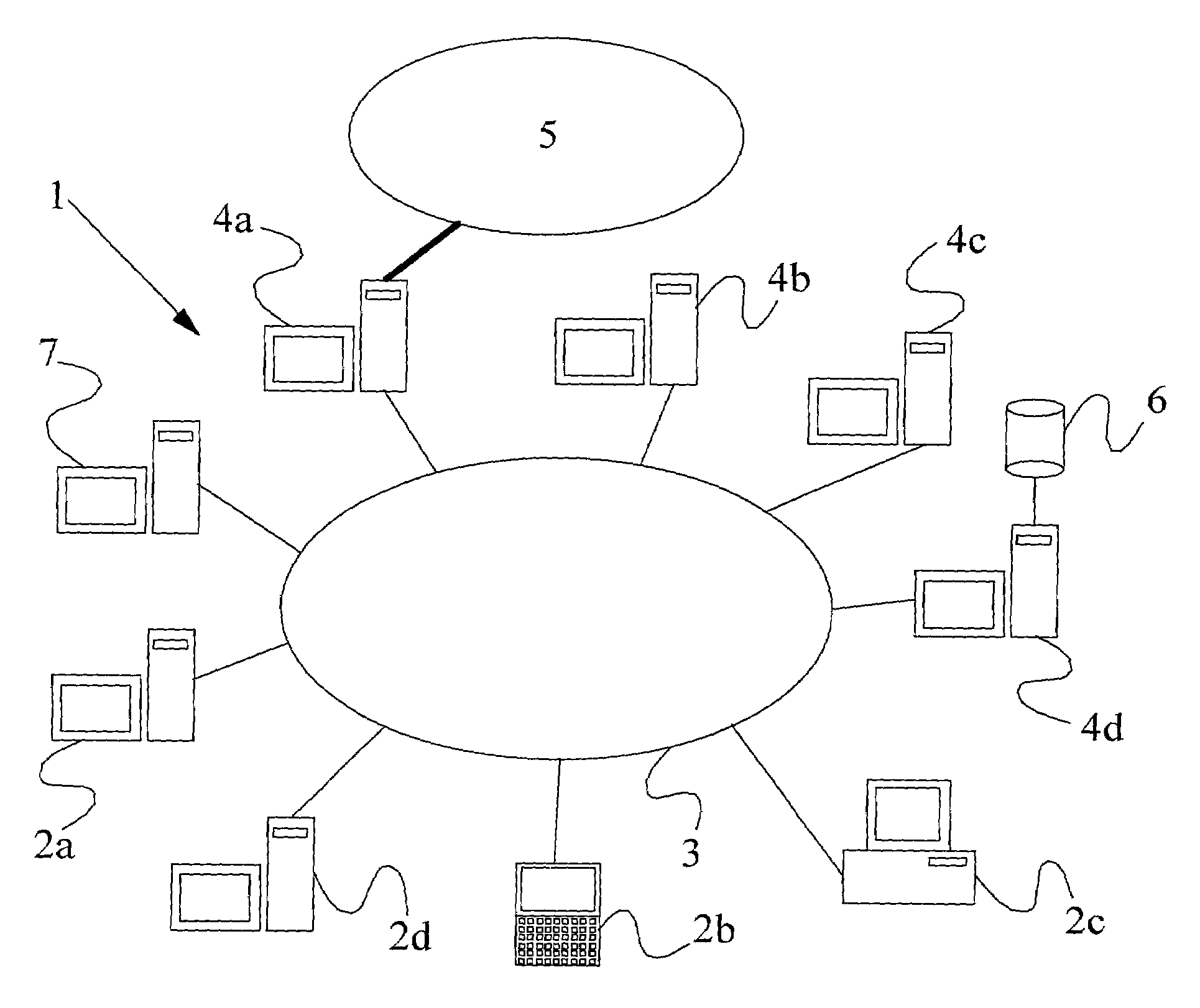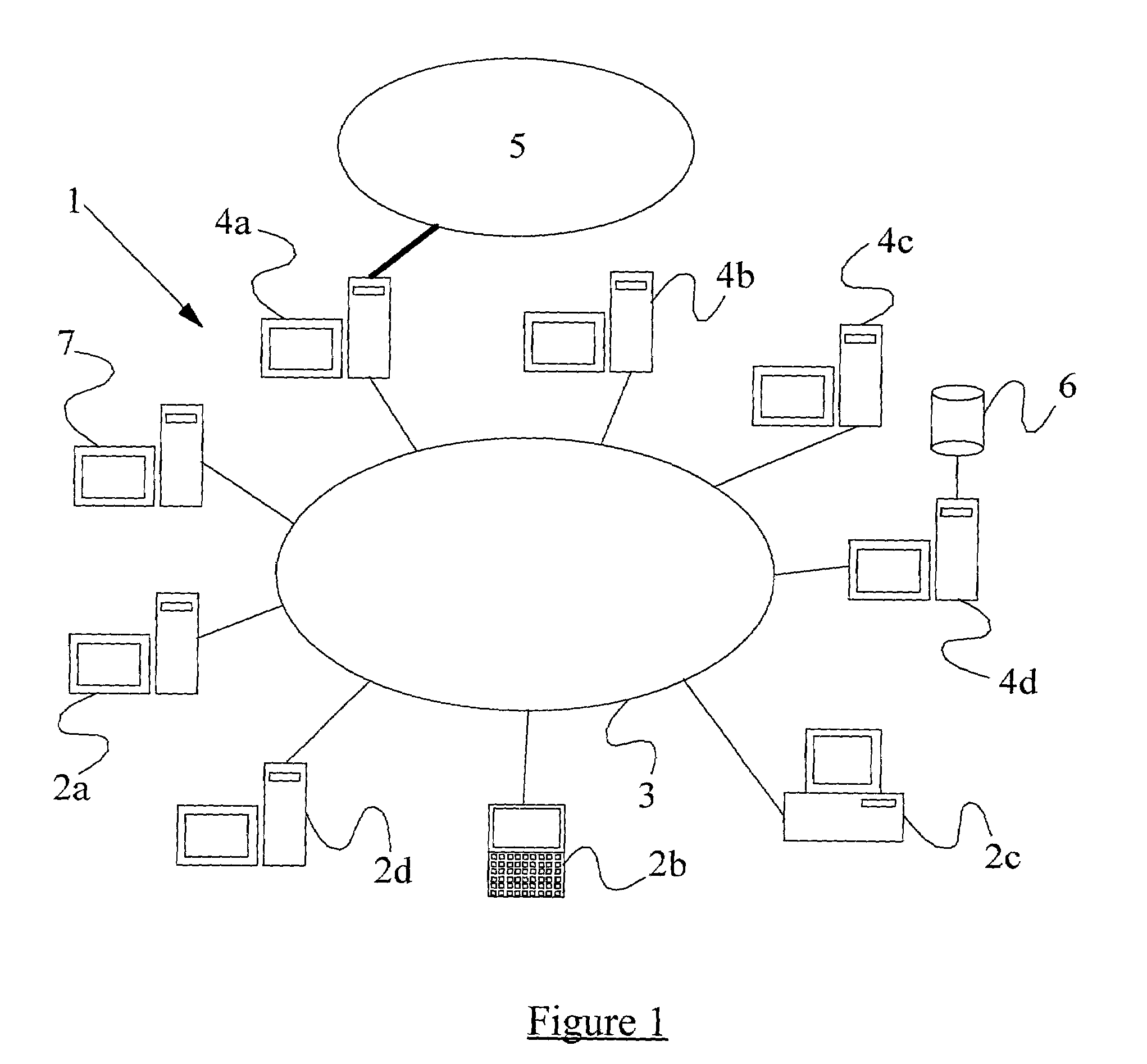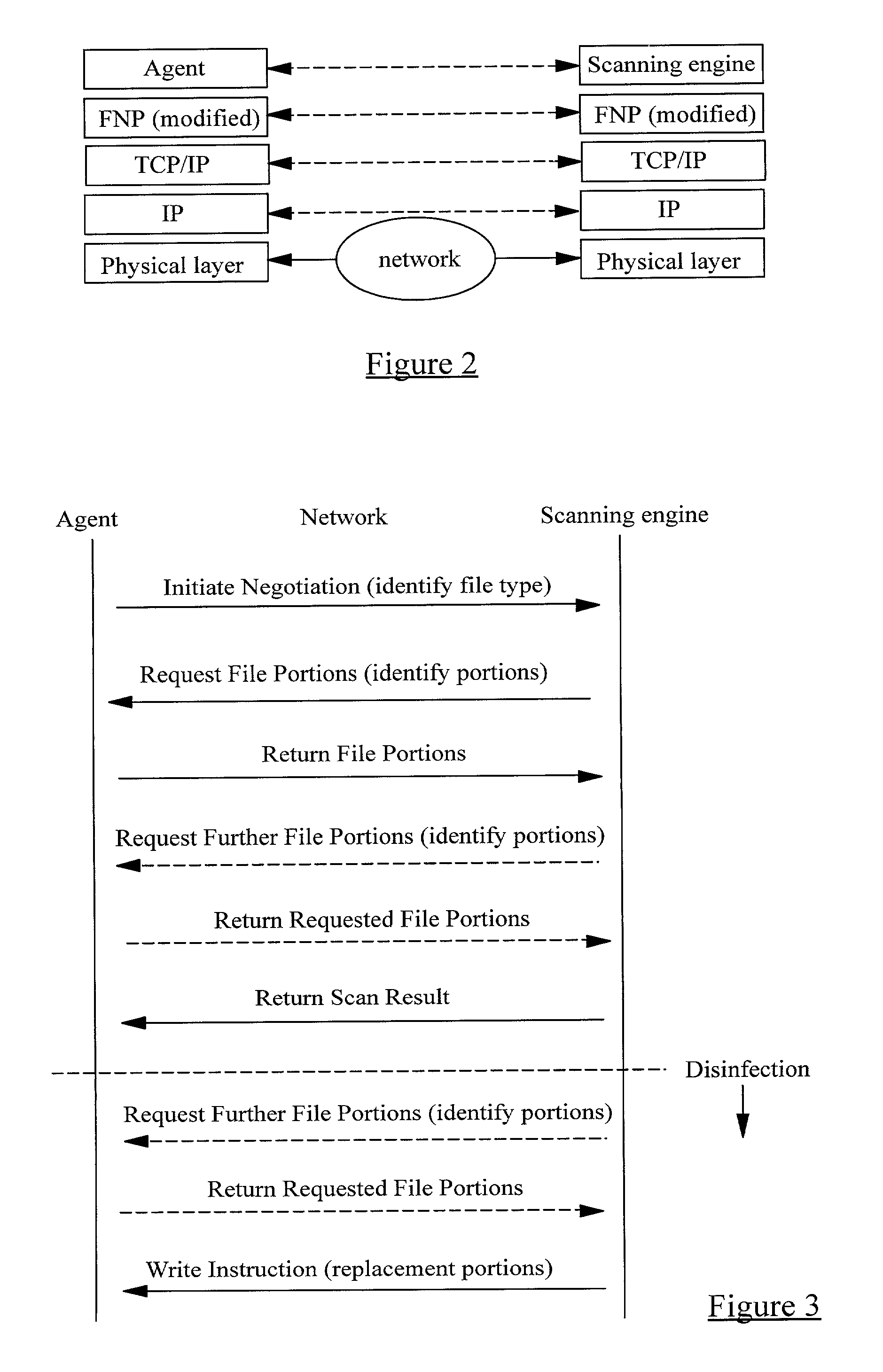Remote computer virus scanning
a virus scanning and remote technology, applied in the field of remote computer virus scanning, can solve the problems of slowing down the virus scanning operation, requiring the transfer of relatively large volumes of data over a computer network, and computer viruses are well known problems, so as to increase network security and reduce the volume of network traffic
- Summary
- Abstract
- Description
- Claims
- Application Information
AI Technical Summary
Benefits of technology
Problems solved by technology
Method used
Image
Examples
Embodiment Construction
[0040]A computer data network (illustrated generally by reference numeral 1) is shown in FIG. 1 and comprises a number of users or clients 2. These users include an administrator's workstation 2a, one or more notebook computers 2b, a number of computer workstations 2c, and a server 2d. The network comprises a physical wire network (Local Area Network (LAN)) 3 to which each of the users 2 is connected via respective network cards (generally integrated into the user terminals and therefore not shown separately in FIG. 1). The network may be an Ethernet network, X.25 network, or the like, with TCP / IP protocol being used as the transport protocol (alternative transport protocols include IPX, Net BEUI, etc). Although it is not considered here in detail, the wire network 3 of FIG. 1 may be replaced by a wireless LAN, e.g. using radio signals to transmit data.
[0041]Also connected to the network (via respective network cards) are a number of so-called “protected systems”4. These include a f...
PUM
 Login to View More
Login to View More Abstract
Description
Claims
Application Information
 Login to View More
Login to View More - R&D
- Intellectual Property
- Life Sciences
- Materials
- Tech Scout
- Unparalleled Data Quality
- Higher Quality Content
- 60% Fewer Hallucinations
Browse by: Latest US Patents, China's latest patents, Technical Efficacy Thesaurus, Application Domain, Technology Topic, Popular Technical Reports.
© 2025 PatSnap. All rights reserved.Legal|Privacy policy|Modern Slavery Act Transparency Statement|Sitemap|About US| Contact US: help@patsnap.com



